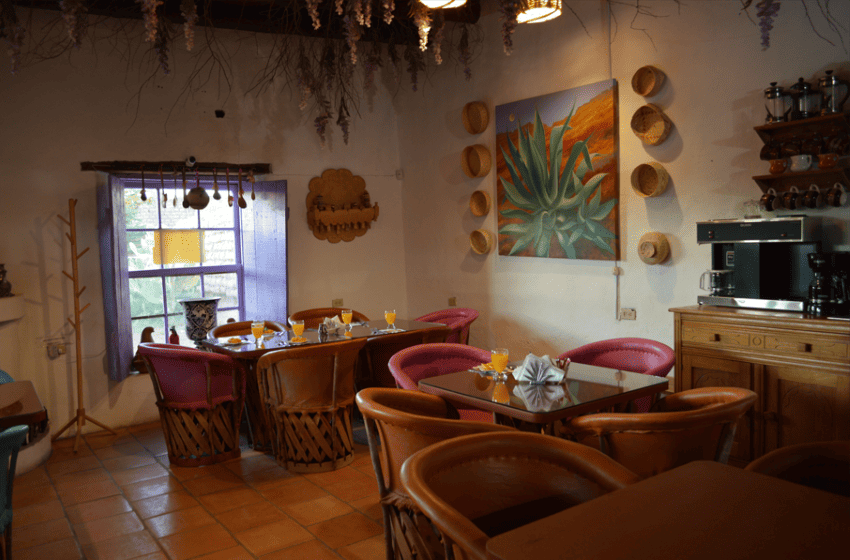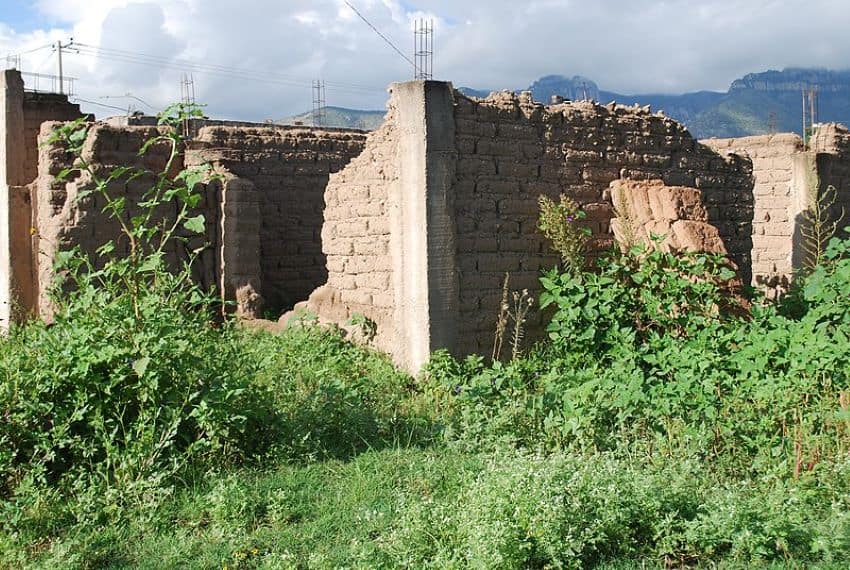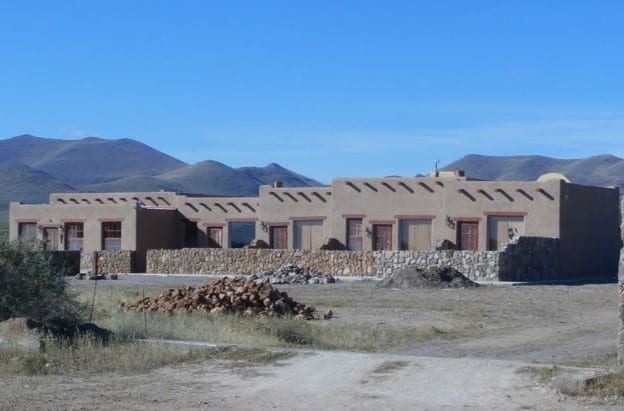It’s probably not a Western without at least one scene of a Mexican village with adobe structures. Perhaps cliché, but until the 20th century, Mexico really was built of the stuff.
Adobe technology emerged in the pre-Columbian period. After the conquest, Indigenous and European techniques and designs mixed to make houses and practical structures for over 400 years.

But adobe fell very quickly out of favor in the mid-20th century in favor of the now-ubiquitous cinder block and cement. Since independence, there has been a strong current in Mexico that seeks to be part of the “modern Western world,” and that means imitating mostly Europe and the United States.
A fledgling construction industry took advantage of this bias, promoting their products as the modern alternative to “backward” and “unhygienic” adobe. This campaign was so successful that adobe is still associated with poverty. Almost all modern Mexican construction uses “modern” materials, and many historic adobe structures have been lost because of lack of maintenance.
Almost nothing survives of pre-Colombian adobe in Mexico, with one important exception: the Paquimé archeological sites in northern Chihuahua, also known as Casas Grandes. Colonial-era structures have fared somewhat better, including elements of 16th-century monasteries near the Popocatépetl volcano. But most surviving adobe buildings are churches and municipal buildings, especially in the north, where arid conditions give a natural helping hand.
Some adobe construction still goes on in Mexico. There are still very remote — and yes, poor — areas where logistics make it expensive or physically impossible to build with industrial materials, so small adobe houses are still built. But overall, adobe construction is a dying art, with Mexico losing more and more of its local masters in traditional techniques, except in some unique cases.
Sustainable architecture in Mexico?

Ecologically conscious building has a certain prestige in the West. Adobe construction has surged in places like New Mexico — where it has also been used since pre-colonial times — for its insulative qualities and lower negative impact on the environment.
These qualities have been noted in design publications, in particular as a way to reuse the millions of liters of wastewater and tons of agave fiber produced by the tequila and mezcal industries. They note that the fiber is particularly suited for adobe brick-making.
But a similar readaptation of adobe seems to be very difficult in Mexico. Sustainability does not have the same prestige with all sectors, and mass-produced cinder blocks are cheaper to make and buy than handcrafted earth-and-fiber adobe blocks, even when the materials are available for free.
Despite this, there have been efforts to revive the use of adobe. They include architect Óscar Hagerman’s middle school in Chihuahua for Rarámuri children; the El Rosario library in Oaxaca, whose construction was sponsored by mezcal company Real Minero; and a recreation of the Ciudad Juárez house where Francisco I. Madero had his provisional government at the start of the Mexican Revolution. The list of adobe projects also includes the in-development Casa Adobe in Los Cabos, a multi-unit complex with adobe and mixed material units looking to capitalize on the eco-friendly market.

Utopia Libertad
A very recent and ongoing project of this type is with Utopía Libertad, one of 12 parks and community centers run by the Iztapalapa borough of Mexico City. Abutting the borough’s men’s prison, the site is dedicated to sustainable development. Various buildings have been constructed with adobe and local stone, including its temazcales, classrooms, a small restaurant and buildings set aside for live collections of the area’s butterfly, turtle and axolotl species. The site also offers classes and workshops on adobe and other natural construction.
Casa del So(u)l
Interestingly enough, the popularity of adobe construction in places like New Mexico has not spread to Mexico. After many years in alternative construction in the U.S., Jack Anderson moved and built his home and hotel, Casa del Soul, in the town of Casas Grandes overlooking the Paquimé site.
Anderson’s specialty is “community minded” constructions, buildings that are developed with local culture and history in mind. So adobe is the star of Casa del Soul, drawing on both pre-Columbian and colonial-era adobe structures.
Casa Plúmula
Another important angle to appreciating Mexican adobe is in salvaging existing structures. Casa Plúmula, an older adobe structure profiled by Architectural Digest magazine after it was salvaged and updated, is located in the neighborhood of San Felipe del Agua on the northern edge of Oaxaca City.
The work was done by noted architectural firm Espacio 18. The exterior conserved as much of the original look as possible, including the tree that had grown in the yard, and the house looks like it has been there forever. However, the structure was reinforced with steel and the interior reshaped into a very modern layout.
Lecturer in Analytical Science for Sustainable Heritage at University College London Daniela Reggio notes that “in Spanish the narrative around sustainability in architecture is different.” Reggio says that she would recommend “a broader approach to fully understand certain technological and cultural choices,” adding that different cultures approach the subject in different ways and time frames.
In other words, Mexico needs to find its own path to sustainability based on Mexican culture as it is today and what the country needs for its future. Sustainability projects in other countries can certainly provide suggestions, but cannot provide guaranteed solutions for Mexico’s needs.
Leigh Thelmadatter arrived in Mexico over 20 years ago and fell in love with the land and the culture in particular its handcrafts and art. She is the author of Mexican Cartonería: Paper, Paste and Fiesta (Schiffer 2019). Her culture column appears regularly on Mexico News Daily.
